ออกแบบประสบการณ์การใช้งานสื่อใน Wear OS โดยใช้หลักการสำคัญที่ให้ความสำคัญกับ การควบคุมของผู้ใช้และประสิทธิภาพ
สม่ำเสมอและคาดการณ์ได้
ปรับรูปแบบ UI และหลีกเลี่ยงการสร้าง UI ใหม่สำหรับการโต้ตอบทั่วไป
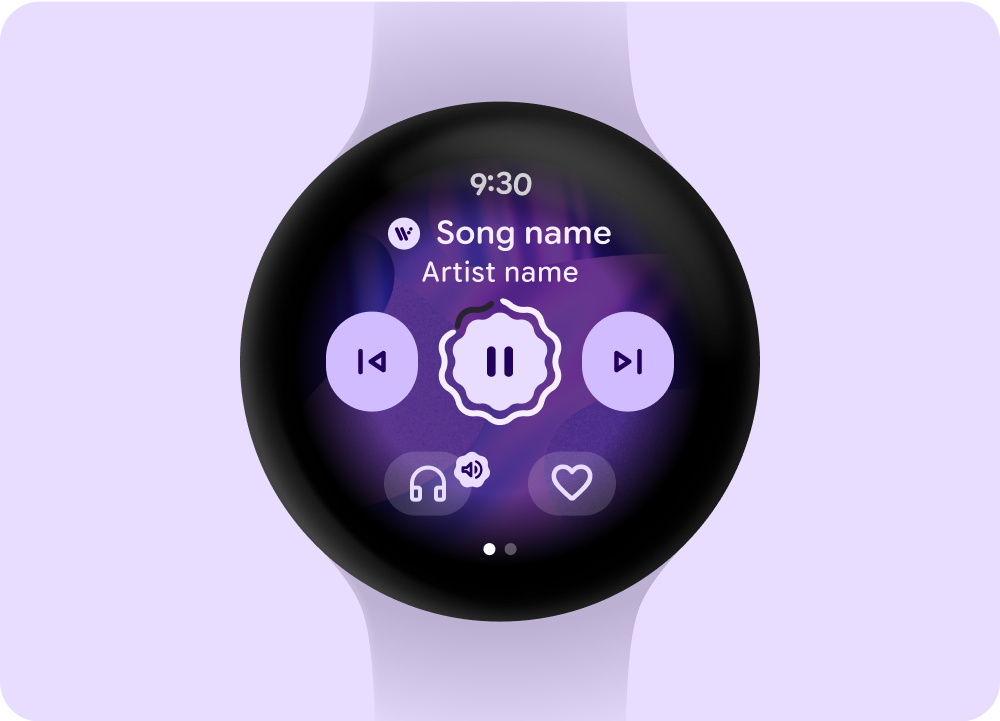
สำคัญและดูได้รวดเร็ว
แสดงตัวควบคุมและเนื้อหาที่สำคัญในลำดับชั้นข้อมูลที่ชัดเจนเพื่อให้ ผู้ใช้ควบคุมการเรียกดูและการเล่นสื่อบนนาฬิกาได้
แสดงสถานะแบบไดนามิก เช่น ระดับเสียงปัจจุบันของอุปกรณ์หรืออุปกรณ์เอาต์พุตที่เชื่อมต่อ
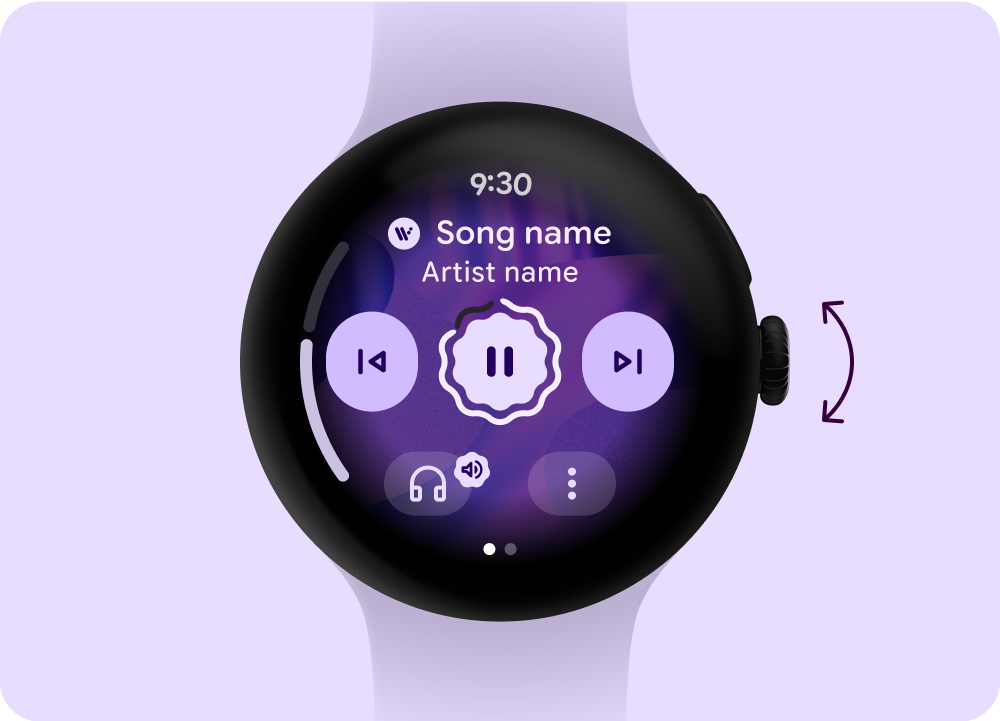
รวดเร็วและสม่ำเสมอ
หลีกเลี่ยงท่าทางสัมผัสที่ซ่อนอยู่หรือรูปแบบการโต้ตอบที่ต้องมีการเริ่มต้นใช้งานและความสามารถในการจดจำเชิงพื้นที่ ระบุความสามารถในการมองเห็นในบรรทัดซึ่งจะนำ ผู้ใช้ไปยังฟังก์ชันการทำงานเพิ่มเติมอย่างชัดเจน
ยืนยันเส้นทางการใช้งานของผู้ใช้ที่เกี่ยวข้องกับ UI ของระบบและแอปที่ผสานรวมกันอย่างราบรื่นเพื่อหลีกเลี่ยงหน้าจอที่ซ้ำกันสำหรับผู้ใช้ในการไปยังส่วนต่างๆ ระหว่างแพลตฟอร์มในบริบทต่างๆ
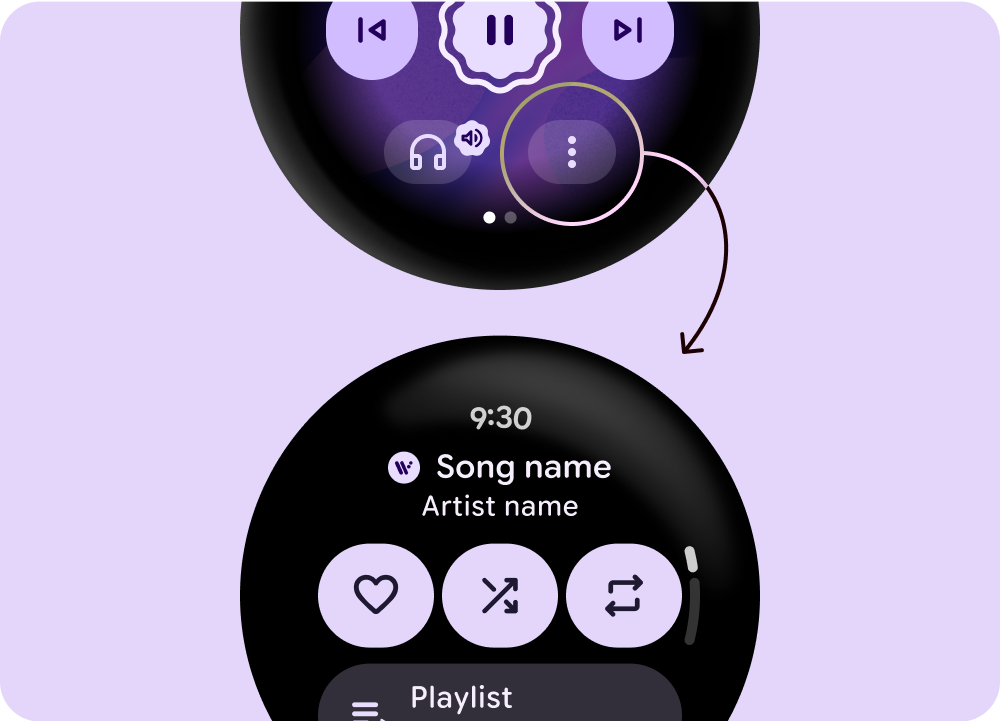
รูปแบบการออกแบบที่พบบ่อย
ส่วนต่อไปนี้จะอธิบายรูปแบบการออกแบบทั่วไปสำหรับประสบการณ์การใช้งานสื่อบน Wear OS
ปุ่มรายการเพิ่มเติม
ใช้ปุ่ม Overflow เพื่อให้การนำทางและฟังก์ชันการทำงานต่างๆ สอดคล้องกัน
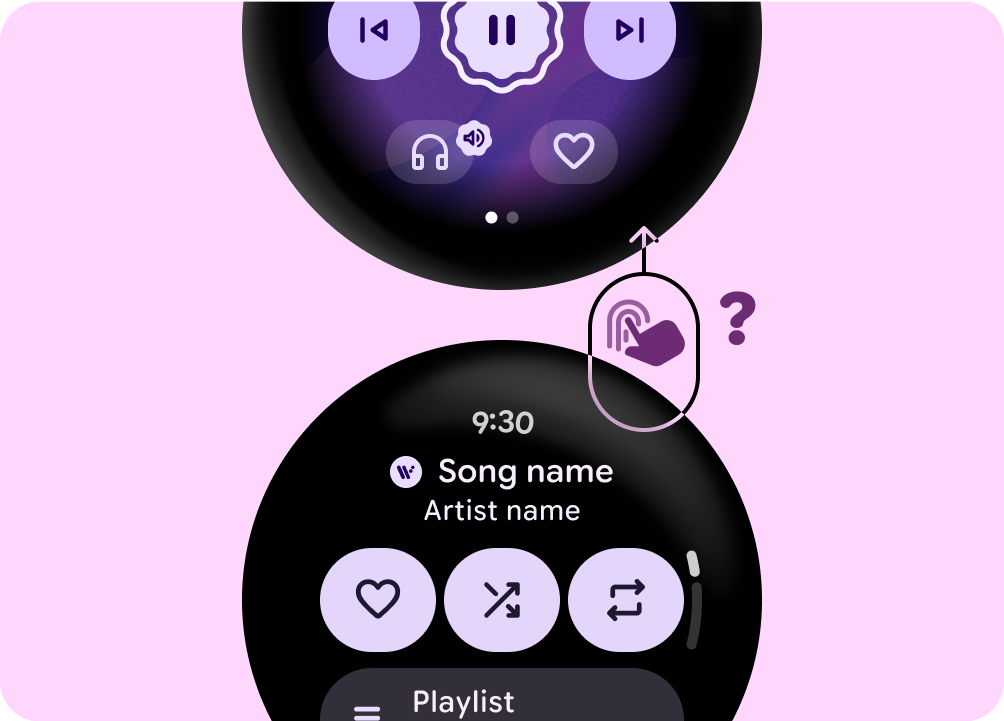
สิ่งที่ไม่ควรทำ
ใช้ท่าทางสัมผัสที่ซ่อนอยู่ซึ่งกำหนดให้ผู้ใช้ต้องจดจำการนำทาง
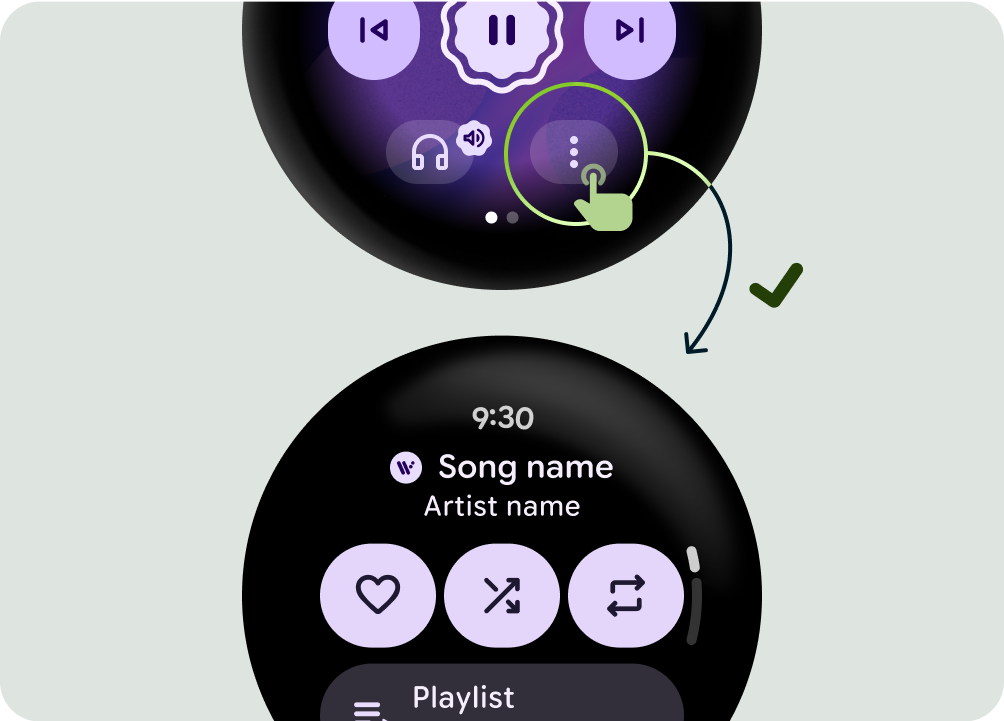
สิ่งที่ควรทำ
แสดงปุ่ม Overflow ที่มองเห็นได้ชัดเจนเพื่อแนะนำให้ผู้ใช้เข้าถึงฟังก์ชันการทำงานเพิ่มเติม
ตัวเลือกการเข้าถึงสื่อที่สอดคล้องกัน
ให้สิทธิ์เข้าถึงฟังก์ชันการทำงานอย่างสม่ำเสมอในแพลตฟอร์มและบริบทของสื่อต่างๆ
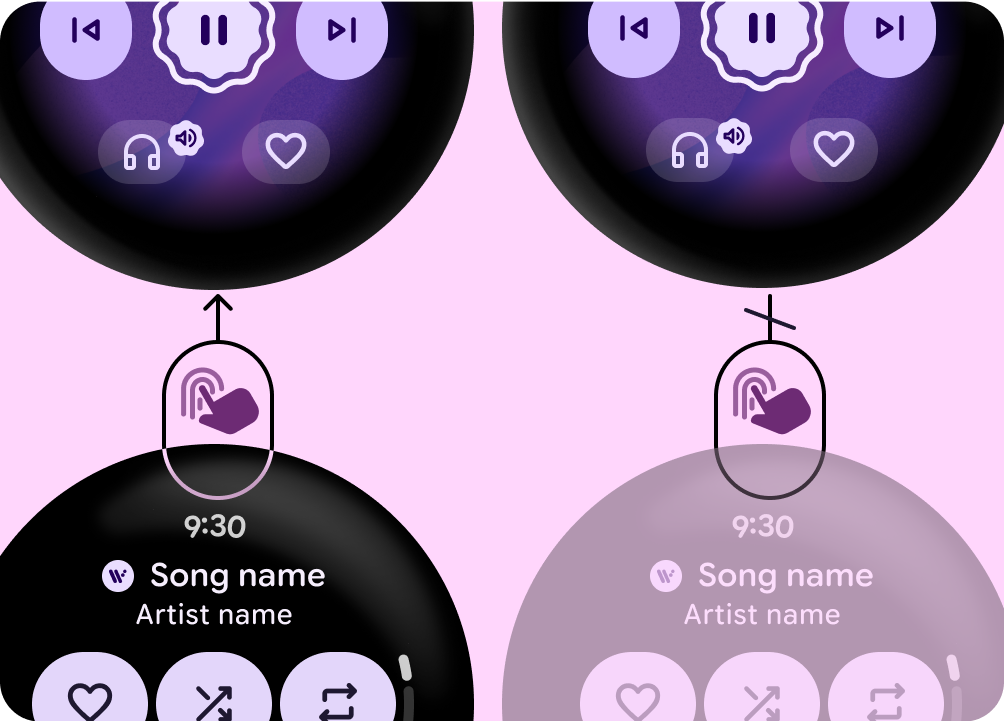
สิ่งที่ไม่ควรทำ
รูปแบบการควบคุมสื่อที่ไม่สอดคล้องกันในแพลตฟอร์มและบริบทของสื่อ ทำให้ผู้ใช้สับสนและเพิ่มภาระทางปัญญา
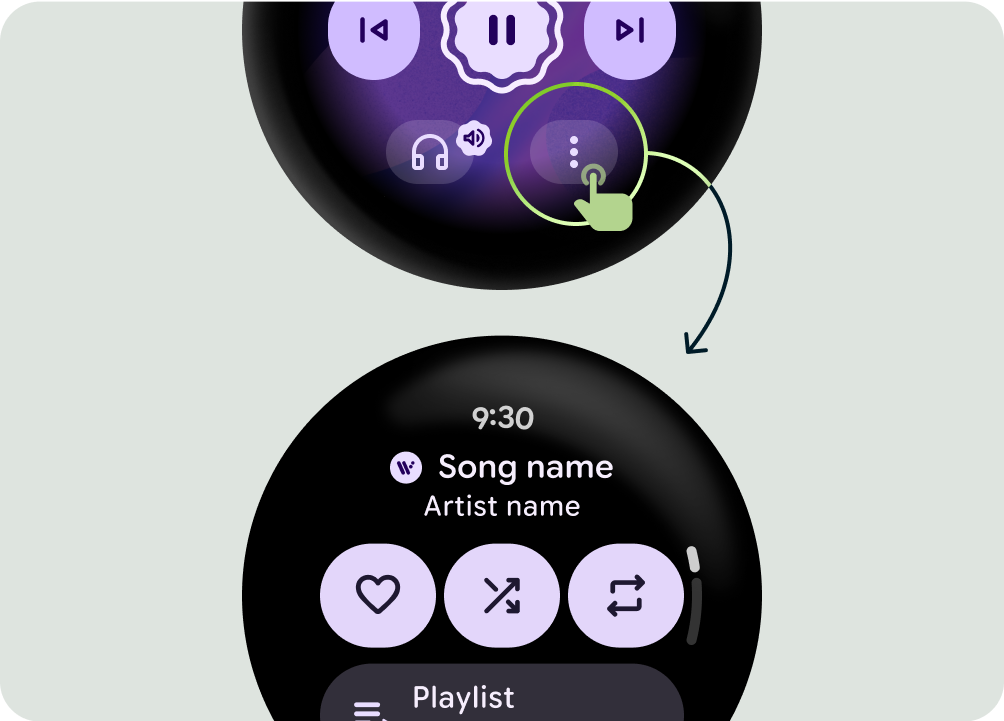
สิ่งที่ควรทำ
สร้างรูปแบบที่สอดคล้องกันในแพลตฟอร์มและบริบทของสื่อ
การควบคุมระดับเสียง
ใช้การโต้ตอบการควบคุมระดับเสียงที่สำคัญ เช่น แถบแสดงการแตะได้ แถบระดับเสียง และ การควบคุมด้วยฮาร์ดแวร์ เพื่อให้แน่ใจว่าสามารถดำเนินการเกี่ยวกับระดับเสียงที่สำคัญได้
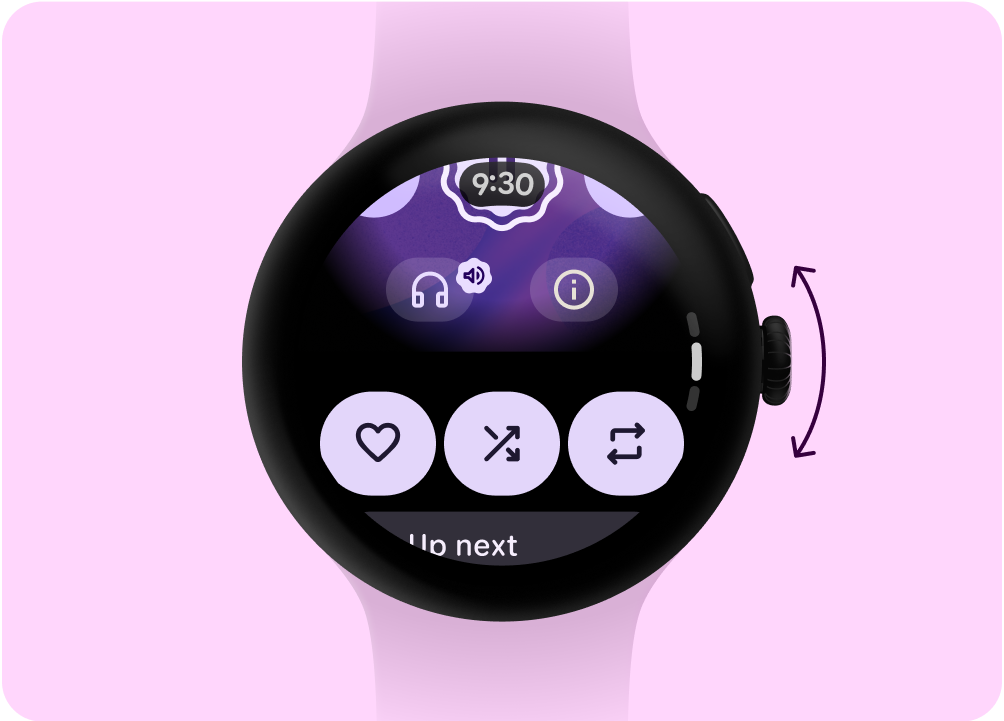
สิ่งที่ไม่ควรทำ
การที่ผู้ใช้ควบคุมระดับเสียงด้วยฮาร์ดแวร์ไม่ได้จะทำให้เกิดความสับสน
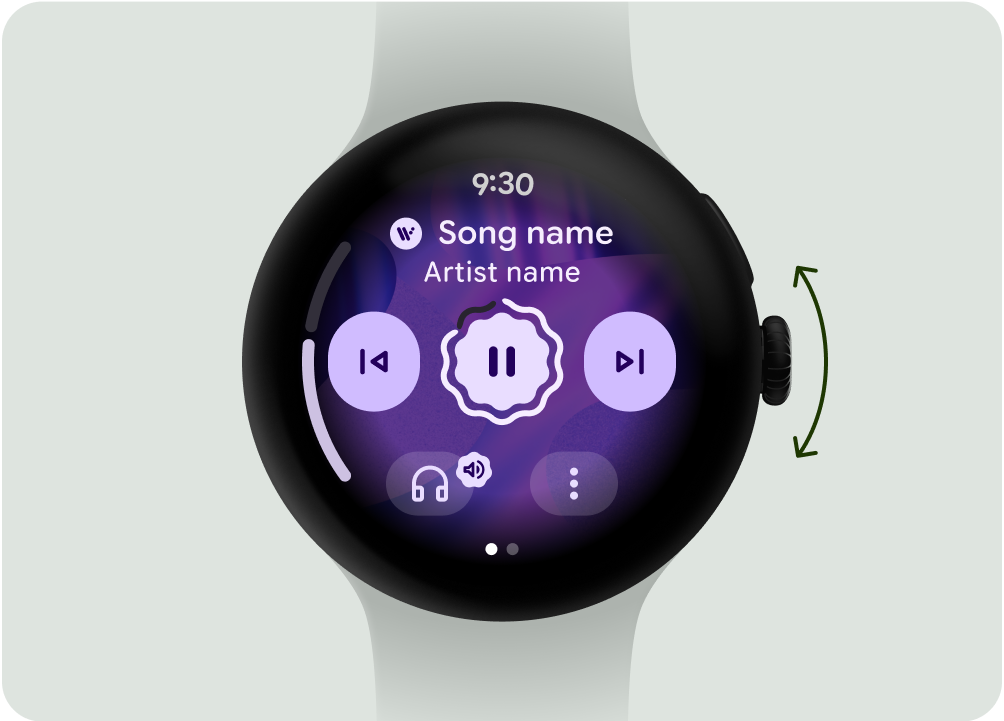
สิ่งที่ควรทำ
อนุญาตให้ผู้ใช้ควบคุมระดับเสียงด้วยเม็ดมะยมของฮาร์ดแวร์
อุปกรณ์เอาต์พุต
ใช้ไอคอนที่แสดงให้ผู้ใช้เห็นอย่างชัดเจนว่าอุปกรณ์ใดที่ใช้ฟัง การเล่นสื่อ
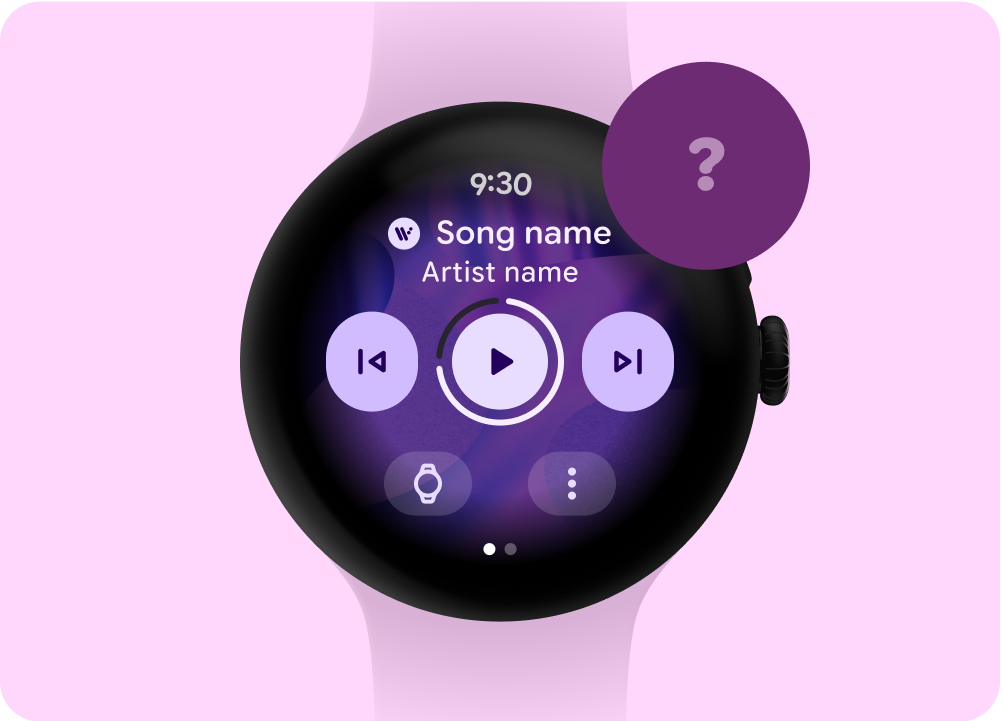
สิ่งที่ไม่ควรทำ
ไอคอนไม่ได้แสดงว่าเสียงจะมาจากไหนและจะควบคุมระดับเสียงที่ใด
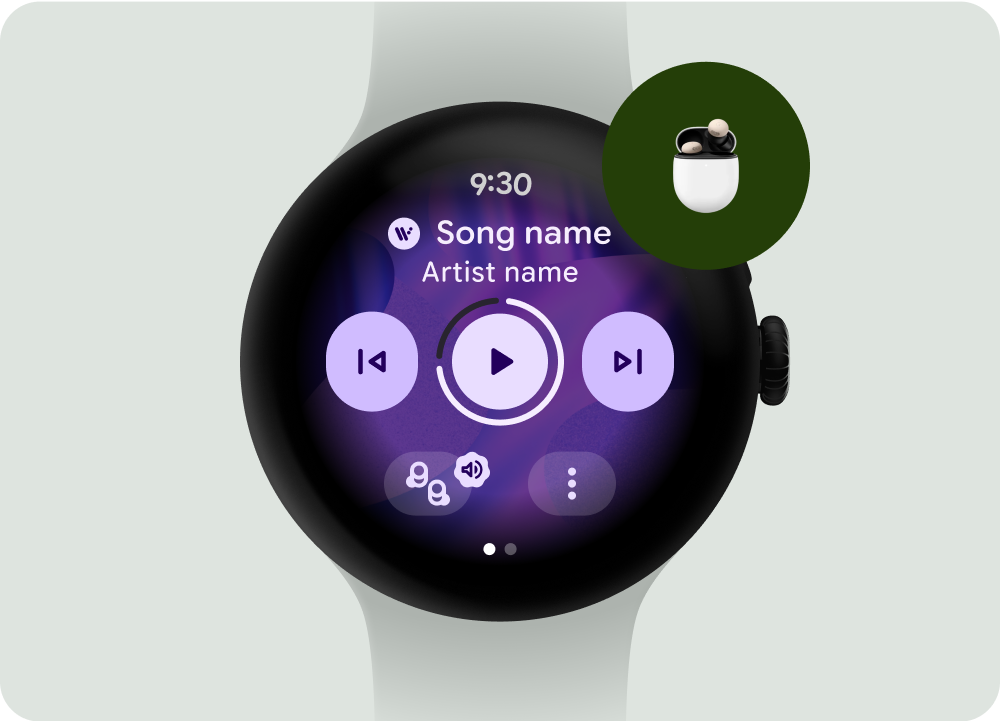
สิ่งที่ควรทำ
แสดงสถานะอุปกรณ์เอาต์พุตพร้อมการบ่งชี้การควบคุมระดับเสียง
ขยายการใช้งานไปยังอุปกรณ์ต่างๆ
พิจารณาความสอดคล้องกันในอุปกรณ์ต่างๆ และใช้รูปแบบที่มีอยู่เพื่อประสบการณ์ของผู้ใช้ที่คาดการณ์ได้มากขึ้น และสอดคล้องกัน

